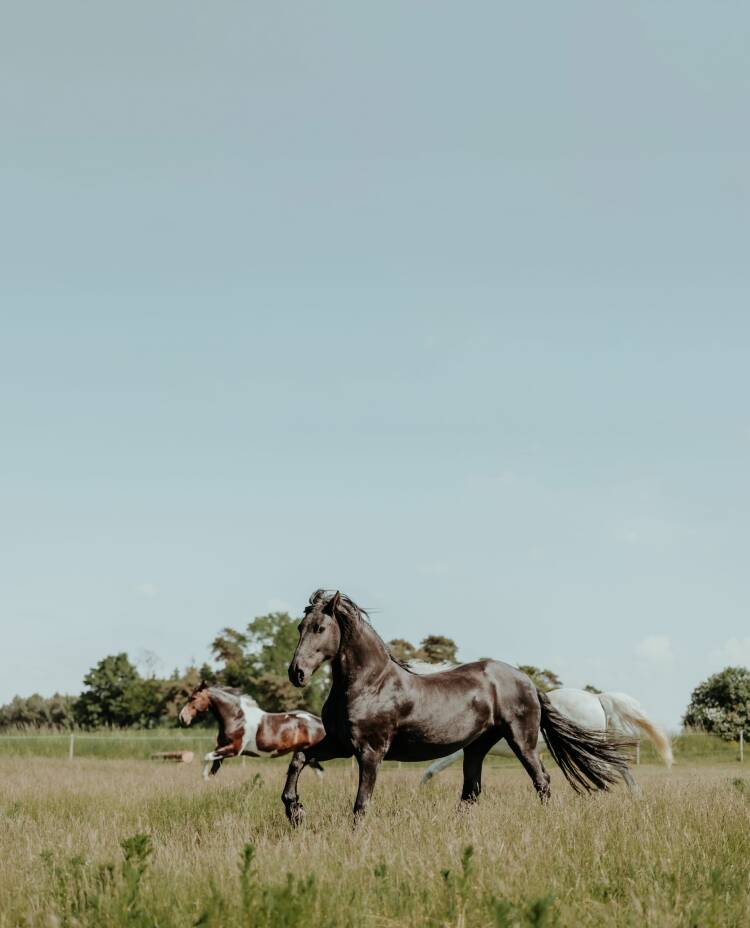
Sources: The behavior of stallions in a semiferal herd in Iceland: Time Budgets, home ranges, and interactions by Hrefna Sigurjonsdottir (2012) & Horses in Company by Lucy Rees (2017)
It is in the herd's collective interest that every foal survives, and if a mare dies during foaling, it is often seen that other horses take care of the foal amongst themselves. The birth usually occurs at night or just before dawn, as this is when the flock rests, and the mare does not have to risk the group moving without her.
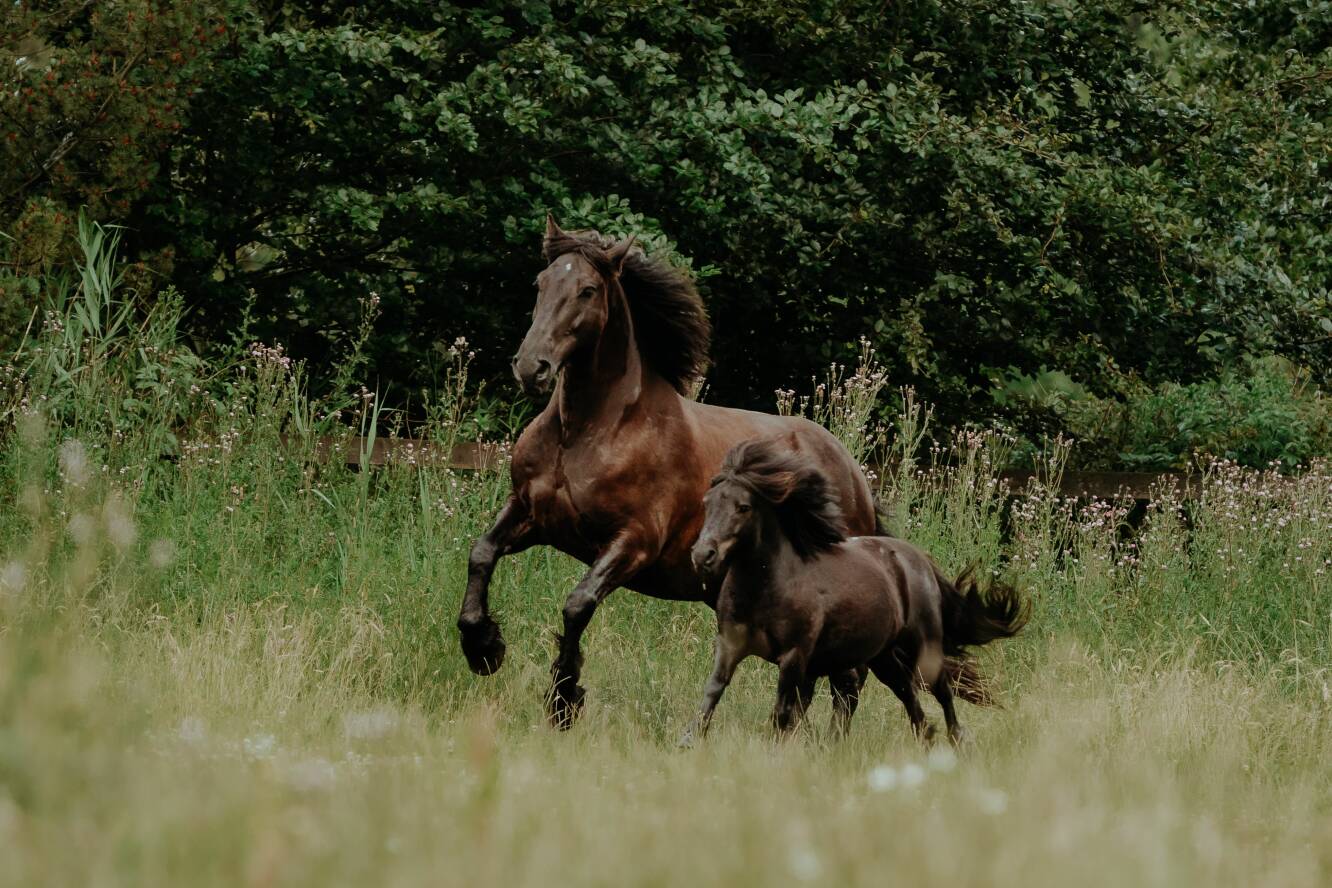
Little aggression in feral horses
Lucy Rees has observed very few instances of aggression in feral horses, which she has analyzed through the social interactions. She explains: “Social interactions can be seen to split things into agonistic behavior, which is the conflict behavior, and affiliated behavior that brings them together.” However, this is something we don’t know much about yet, and Lucy Rees says: “Curiously enough, the range of ways horses can express conflict is well documented in research, but we know very little about affiliate behavior.”
“Horses are cohesive; so much goes on between a herd of horses; spacing, who is with who, sharing personal space, touching each other, are just some of those subtle signals that we often miss, says Lucy Rees. “There is so little conflict, but so much bringing them together,” she says, describing the many tiny touches that horses do: “Horses often pass their heads over the neck or over the head of the other horse. Sometimes they rest their head heavily on the back of the other horse, with their nostrils flaring, as if they are breathing each other for a second, like an olfactory contact”.
Horses living closely to natural life are calmer
Another researcher who has studied the social life of horses is Hrefna Sigurjónsdóttir from the University of Iceland. She has spent many years observing semi-feral groups of Icelandic horses in the open plains in Iceland. She has found that the groups with the least aggressive behavior lived in herds closely related to the natural life of wild horses; groups consisting of one stallion, a few mares, and their foals. “Feral horses show low levels of aggressive interactions, and the same is true for groups of high stability kept under semi-natural conditions,” she says.
Welfare is more than just physical well-being
Welfare has previously focused on physical wellbeing, but by nature, horses are highly social animals depending on the group for survival, she says. “Because of their social nature, horses need many opportunities to learn from each other and form bonds.” Foals learn from older horses in the group, and the bonds that are formed play an essential role in the herd’s social structure.
In most semi-feral herds, the group’s stability is stable, and it helps to establish dominance and friendships between horses of similar age and the same sex. “Frequent changes increase aggressive interactions between horses, and the lack of stability is a risk of potential injury,” Hrefna Sigurjónsd explains. Studies have shown that low aggression in the herd is because of the fact that the horses are familiar with each other and respect the communications signals. “Such groups where adult geldings replace stallions could easily be taken up as a management practice,” says elaborates. She thinks that the group’s stability is of utmost importance, and the most aggression was found in groups of young horses, where the horses were unfamiliar with each other. Therefore, Hrefna Sigurjónsd says that “Peer groups should be avoided, especially if composed of young, unfamiliar horses, because of high levels of aggression.”
Learning from feral horses
Hrefna Sigurjónsdóttir believes there is a need for horse caretakers to learn from the feral horses and consider group stability and group composition in domestic horse management: “Group composition, which is similar to the natural social system with both sexes (sub-adults and foals) and stable membership of adult horses, is likely to provide the best social environment for all horses because of deficient aggression levels.” According to Hrefna Sigurjónsdóttir, it also provides the best opportunities for young horses to learn social skills from observing older and experienced horses and forming friendships with other young horses. She states that the significance of horse welfare can never be overemphasized and says: “Recent research on the cognitive abilities of horses and their emotions has shown us that horses are more complex in these areas than previously thought.” Therefore, she hopes that this awareness of the social and emotional needs of equines will affect the way we manage the horses in our care.
– Hrefna Sigurdsdottir

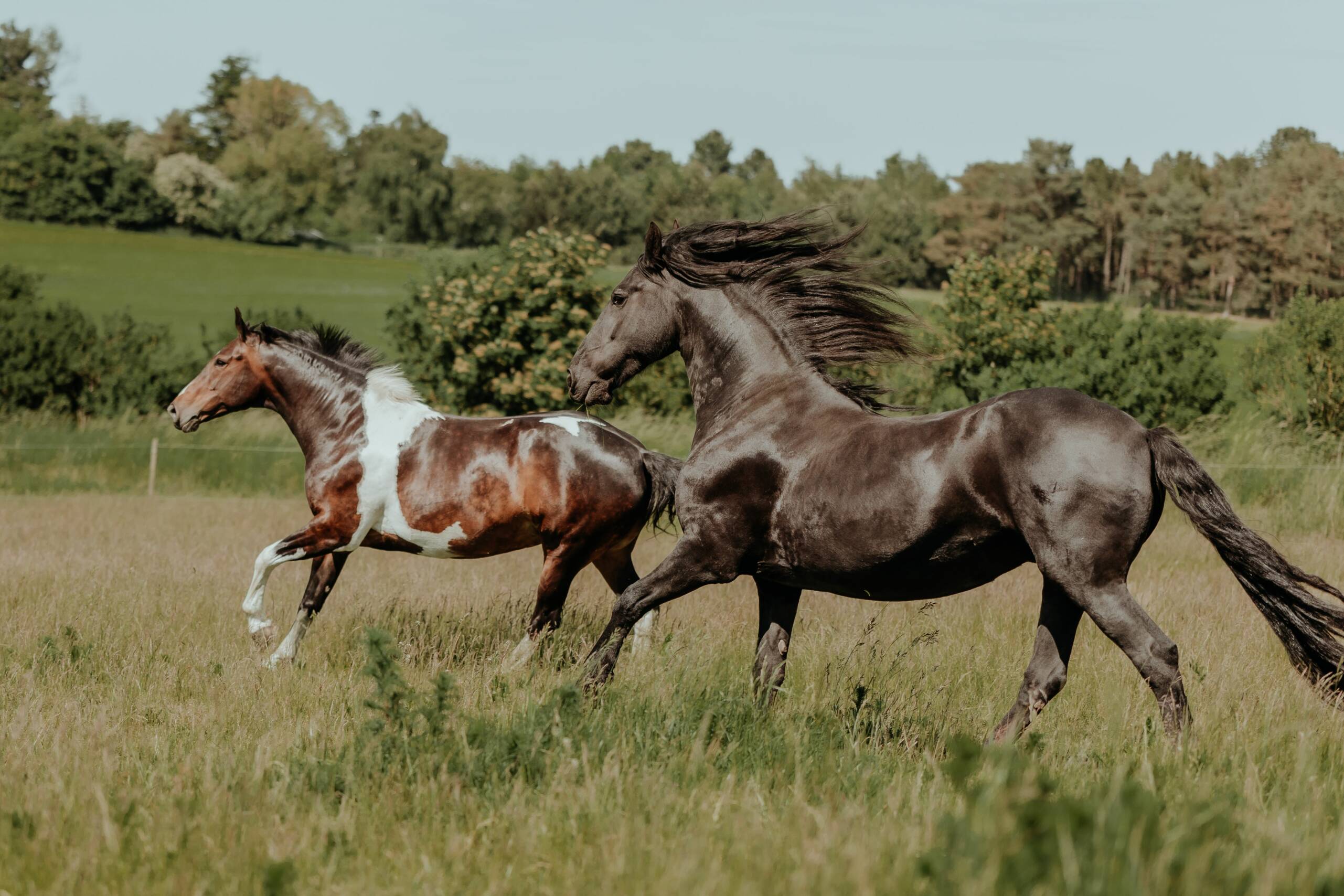
The stallion makes scent markings by laying its manure in the same place in a pyramidal pile. It signals to outsiders that he's been there and is coming back. Sometimes he can also be seen urinating on top of other horses' manure to mark his presence
–Lucy Rees

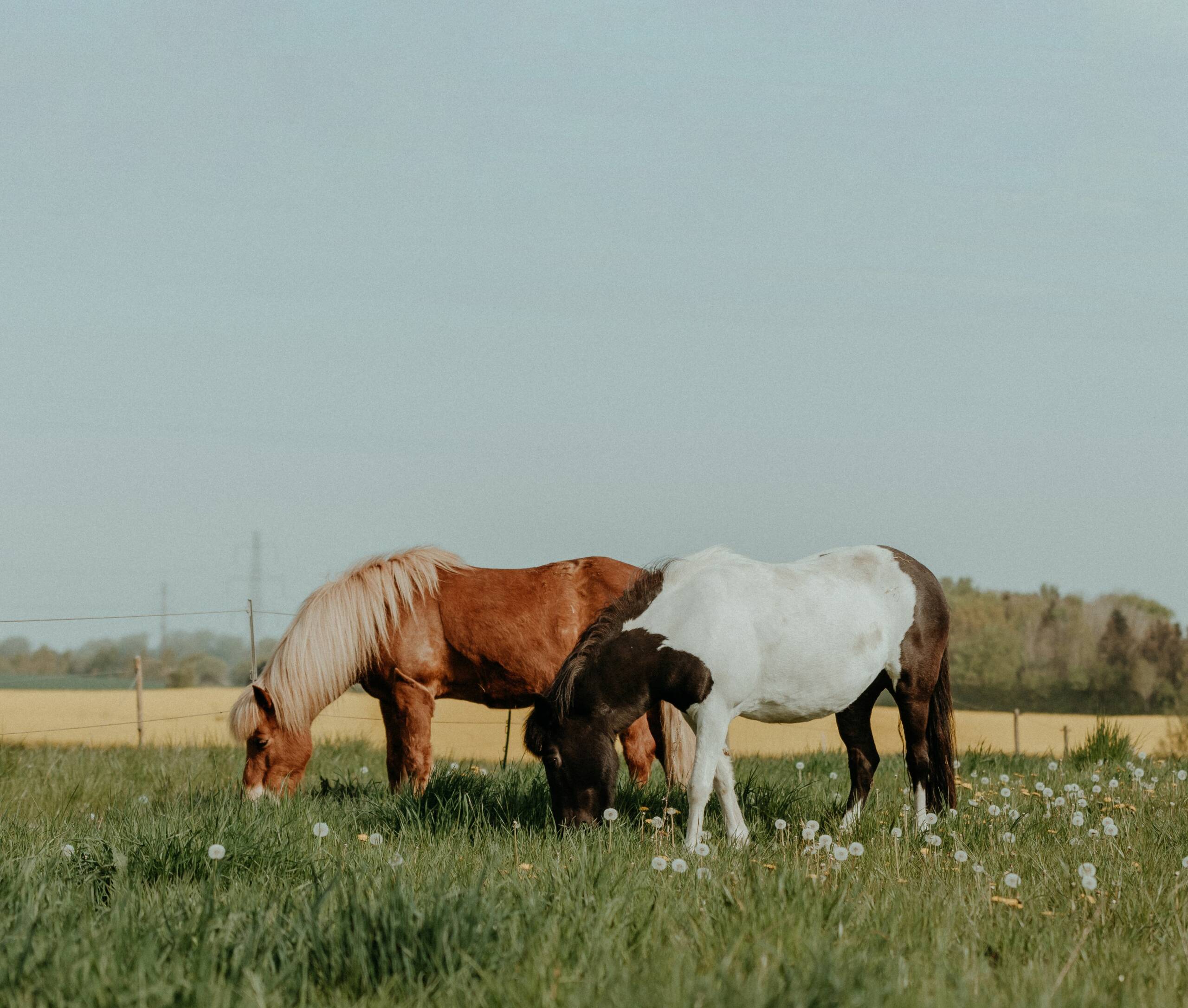
– Hrefna Sigurdsdottir

The average length for how far a flock walks during a day is 18 kilometers, The average time horses spend eating is 18 hours per day, and the time they spend standing or lying is no more than four hours.
"To understand horses and their difficulties in our hands, we need to watch them as they are - without humanlike interpretations and expectations," Lucy Rees explains. Lucy Rees has been studying wild horses in Spain in order to analyze the horses' social behavior and to open up for a better understanding of horses’ natural way of living.
Understanding natural behavior
“The living conditions of domestic horses differ profoundly from the conditions to which horses’ long evolution have adapted them to,” Lucy Rees says. “Domestic horses’ behavior and welfare are affected. However, we cannot recognize abnormal, stressed, or pathological behavior without knowing what normal behavior is. We cannot observe normal behavior without looking into the horses’ living conditions,” she explains.
Wild herds of horses consist of several separate, small bands of primarily a single stallion, his mares and foals, and young horses of one to two years, all living on the same territory. As social animals, the horses interact with one another by participating in mutual grooming and play. They nap and graze close to each other, building strong bonds with other horses in the herd. Through her research, Lucy Rees has shown that free-ranging horses communicate via positive reinforcement and less via punishment, in contradiction to earlier beliefs, where it was thought that horses had a linear hierarchy in the herd.
The role of the lead mare
The horses have no permanent settlement but wander around an area that varies in size, sometimes up to 70 km2 in a day. Several smaller groups of horses can live next to each other in areas with good forage opportunities, but the stallions keep their own flocks together.
The herd has a solid core of mares, but occasionally new mares are encountered from outside. The stallion and the lead mare are closely connected. The lead mare seeks out new grazing areas and she provides stability and a sense of calm among the young horses. Foals stay with the herd until the age of around 2 years old, after which they tend to leave the group and find new herds for themselves. Studies show that when a filly becomes sexually mature, the stallion will push her away from the group to avoid inbreeding. There are only a few cases of mating between siblings that have grown up together, and breeding between a mare and her son has never been observed.
Boys have more fun
The young stallions form bachelor herds which stick together until they can lure some mares to create a new flock with them. Lucy Rees explains: “Males have a livelier social life, and from the time they are just a few weeks old, they seem to regard their mothers as milk providers, but little more.” She elaborates and says: “Their fathers, though, fascinate them so much that when seen together, the pair is mistakenly perceived as a mare and foal when they’re actually father and son.”
Stallions often look after their sons and play gently at first but with increased energy. It is often assumed that the stallion drives the colts away when they mature, but in her experience, the colts often leave the herd of their own free will as they set off on new adventures as they grow older. According to her, the only time a stallion will chase the colt away is if he begins to take a sexual interest in the mares.
The synchronized life of horses
Horses live a life synchronized with the rest of the herd. If the horses observe a threat, their first move is to hurry together before fleeing like a group. According to Lucy Reels, it is a way to defend the group by confusing a predator, so it does not know where to attack. The rules of the herd are to keep together, not collide and synchronize with those around you. Horses synchronize speed and directions, and the lateral position of their eyes helps them avoid clashing. Synchronizing is also helpful for more quiet and peaceful times too; “Bands stay together, eat together, rest together, go to the water to drink together. Mares spend time teaching other youngsters to respect their personal space. Through observations of the mare and the other horses in the group, the foals learn to observe the social signals of horses.”
Text Merete Haahr // Photo: Victoria Binder Photography
Horses are highly social animals, and they depend on the herd for survival. But do we really know what that means? For most horseowners, a stable with long rows of cleaned stalls and fresh hay seems safe and welcoming, but how does it look from the horses' point of view? How does keeping horses in separate, individual stalls take the horses' basic need for companionship into consideration? How can we minimize aggression and facilitate an environment that gives the horses a chance to connect and create those all-important social and emotional bonds?
The social life
of horses
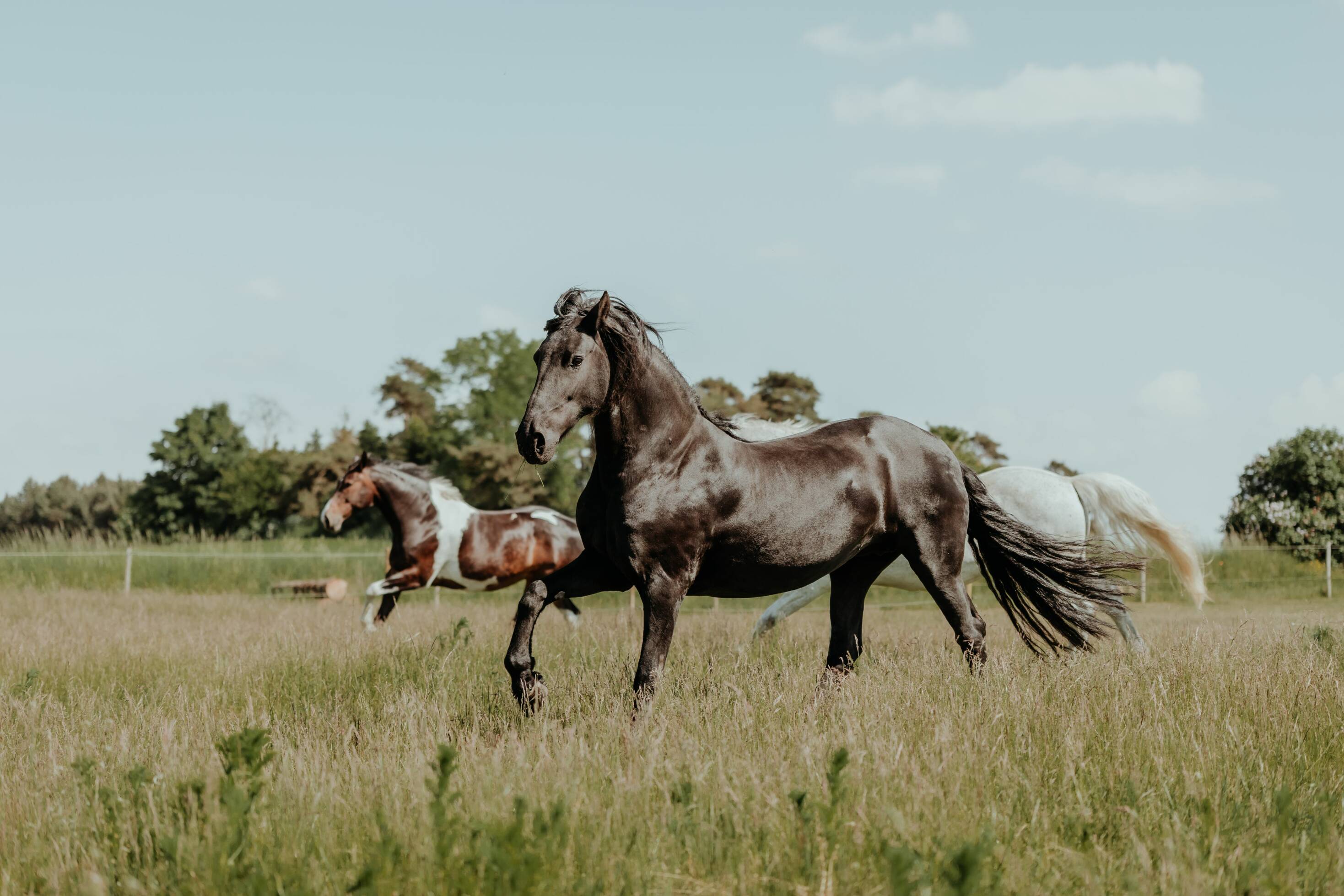

Sources: The behavior of stallions in a semiferal herd in Iceland: Time Budgets, home ranges, and interactions by Hrefna Sigurjonsdottir (2012) & Horses in Company by Lucy Rees (2017)
It is in the herd's collective interest that every foal survives, and if a mare dies during foaling, it is often seen that other horses take care of the foal amongst themselves. The birth usually occurs at night or just before dawn, as this is when the flock rests, and the mare does not have to risk the group moving without her.

Little aggression in feral horses
Lucy Rees has observed very few instances of aggression in feral horses, which she has analyzed through the social interactions. She explains: “Social interactions can be seen to split things into agonistic behavior, which is the conflict behavior, and affiliated behavior that brings them together.” However, this is something we don’t know much about yet, and Lucy Rees says: “Curiously enough, the range of ways horses can express conflict is well documented in research, but we know very little about affiliate behavior.”
“Horses are cohesive; so much goes on between a herd of horses; spacing, who is with who, sharing personal space, touching each other, are just some of those subtle signals that we often miss, says Lucy Rees. “There is so little conflict, but so much bringing them together,” she says, describing the many tiny touches that horses do: “Horses often pass their heads over the neck or over the head of the other horse. Sometimes they rest their head heavily on the back of the other horse, with their nostrils flaring, as if they are breathing each other for a second, like an olfactory contact”.
Horses living closely to natural life are calmer
Another researcher who has studied the social life of horses is Hrefna Sigurjónsdóttir from the University of Iceland. She has spent many years observing semi-feral groups of Icelandic horses in the open plains in Iceland. She has found that the groups with the least aggressive behavior lived in herds closely related to the natural life of wild horses; groups consisting of one stallion, a few mares, and their foals. “Feral horses show low levels of aggressive interactions, and the same is true for groups of high stability kept under semi-natural conditions,” she says.
Welfare is more than just physical well-being
Welfare has previously focused on physical wellbeing, but by nature, horses are highly social animals depending on the group for survival, she says. “Because of their social nature, horses need many opportunities to learn from each other and form bonds.” Foals learn from older horses in the group, and the bonds that are formed play an essential role in the herd’s social structure.
In most semi-feral herds, the group’s stability is stable, and it helps to establish dominance and friendships between horses of similar age and the same sex. “Frequent changes increase aggressive interactions between horses, and the lack of stability is a risk of potential injury,” Hrefna Sigurjónsd explains. Studies have shown that low aggression in the herd is because of the fact that the horses are familiar with each other and respect the communications signals. “Such groups where adult geldings replace stallions could easily be taken up as a management practice,” says elaborates. She thinks that the group’s stability is of utmost importance, and the most aggression was found in groups of young horses, where the horses were unfamiliar with each other. Therefore, Hrefna Sigurjónsd says that “Peer groups should be avoided, especially if composed of young, unfamiliar horses, because of high levels of aggression.”
Learning from feral horses
Hrefna Sigurjónsdóttir believes there is a need for horse caretakers to learn from the feral horses and consider group stability and group composition in domestic horse management: “Group composition, which is similar to the natural social system with both sexes (sub-adults and foals) and stable membership of adult horses, is likely to provide the best social environment for all horses because of deficient aggression levels.” According to Hrefna Sigurjónsdóttir, it also provides the best opportunities for young horses to learn social skills from observing older and experienced horses and forming friendships with other young horses. She states that the significance of horse welfare can never be overemphasized and says: “Recent research on the cognitive abilities of horses and their emotions has shown us that horses are more complex in these areas than previously thought.” Therefore, she hopes that this awareness of the social and emotional needs of equines will affect the way we manage the horses in our care.
– Hrefna Sigurdsdottir


The stallion makes scent markings by laying its manure in the same place in a pyramidal pile. It signals to outsiders that he's been there and is coming back. Sometimes he can also be seen urinating on top of other horses' manure to mark his presence.
–Lucy Rees

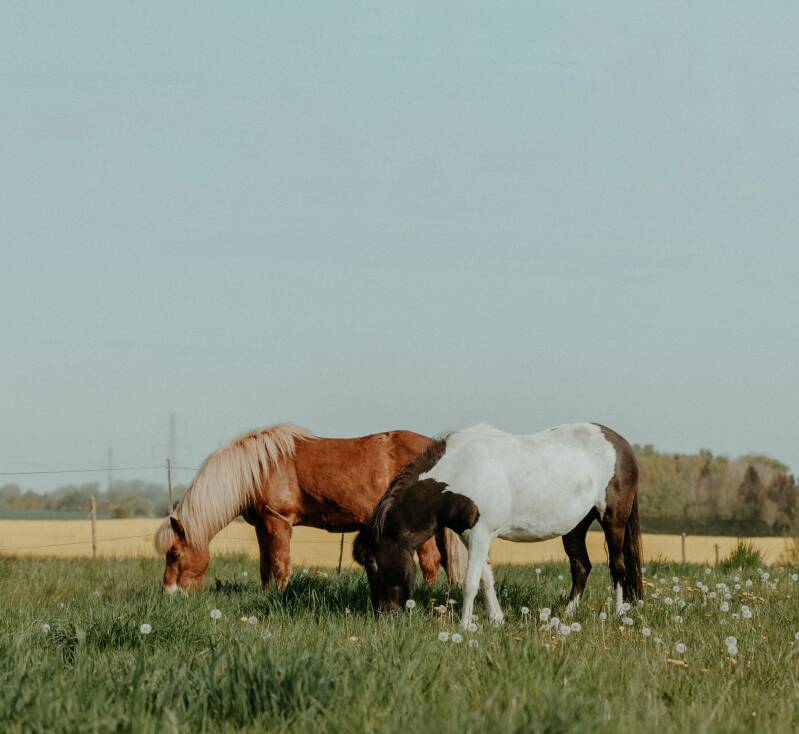
– Hrefna Sigurdsdottir

The average length for how far a flock walks during a day is 18 kilometers, The average time horses spend eating is 18 hours per day, and the time they spend standing or lying is no more than four hours.
"To understand horses and their difficulties in our hands, we need to watch them as they are - without humanlike interpretations and expectations," Lucy Rees explains. Lucy Rees has been studying wild horses in Spain in order to analyze the horses' social behavior and to open up for a better understanding of horses’ natural way of living.
Understanding natural behavior
“The living conditions of domestic horses differ profoundly from the conditions to which horses’ long evolution have adapted them to,” Lucy Rees says. “Domestic horses’ behavior and welfare are affected. However, we cannot recognize abnormal, stressed, or pathological behavior without knowing what normal behavior is. We cannot observe normal behavior without looking into the horses’ living conditions,” she explains.
Wild herds of horses consist of several separate, small bands of primarily a single stallion, his mares and foals, and young horses of one to two years, all living on the same territory. As social animals, the horses interact with one another by participating in mutual grooming and play. They nap and graze close to each other, building strong bonds with other horses in the herd. Through her research, Lucy Rees has shown that free-ranging horses communicate via positive reinforcement and less via punishment, in contradiction to earlier beliefs, where it was thought that horses had a linear hierarchy in the herd.
The role of the lead mare
The horses have no permanent settlement but wander around an area that varies in size, sometimes up to 70 km2 in a day. Several smaller groups of horses can live next to each other in areas with good forage opportunities, but the stallions keep their own flocks together.
The herd has a solid core of mares, but occasionally new mares are encountered from outside. The stallion and the lead mare are closely connected. The lead mare seeks out new grazing areas and she provides stability and a sense of calm among the young horses. Foals stay with the herd until the age of around 2 years old, after which they tend to leave the group and find new herds for themselves. Studies show that when a filly becomes sexually mature, the stallion will push her away from the group to avoid inbreeding. There are only a few cases of mating between siblings that have grown up together, and breeding between a mare and her son has never been observed.
Boys have more fun
The young stallions form bachelor herds which stick together until they can lure some mares to create a new flock with them. Lucy Rees explains: “Males have a livelier social life, and from the time they are just a few weeks old, they seem to regard their mothers as milk providers, but little more.” She elaborates and says: “Their fathers, though, fascinate them so much that when seen together, the pair is mistakenly perceived as a mare and foal when they’re actually father and son.”
Stallions often look after their sons and play gently at first but with increased energy. It is often assumed that the stallion drives the colts away when they mature, but in her experience, the colts often leave the herd of their own free will as they set off on new adventures as they grow older. According to her, the only time a stallion will chase the colt away is if he begins to take a sexual interest in the mares.
The synchronized life of horses
Horses live a life synchronized with the rest of the herd. If the horses observe a threat, their first move is to hurry together before fleeing like a group. According to Lucy Reels, it is a way to defend the group by confusing a predator, so it does not know where to attack. The rules of the herd are to keep together, not collide and synchronize with those around you. Horses synchronize speed and directions, and the lateral position of their eyes helps them avoid clashing. Synchronizing is also helpful for more quiet and peaceful times too; “Bands stay together, eat together, rest together, go to the water to drink together. Mares spend time teaching other youngsters to respect their personal space. Through observations of the mare and the other horses in the group, the foals learn to observe the social signals of horses.”
Text: Merete Haahr // Photo: Victoria Binder Photography
Horses are highly social animals, and they depend on the herd for survival. But do we really know what that means? For most horseowners, a stable with long rows of cleaned stalls and fresh hay seems safe and welcoming, but how does it look from the horses' point of view? How does keeping horses in separate, individual stalls take the horses' basic need for companionship into consideration? How can we minimize aggression and facilitate an environment that gives the horses a chance to connect and create those all-important social and emotional bonds?
The social life of horses
